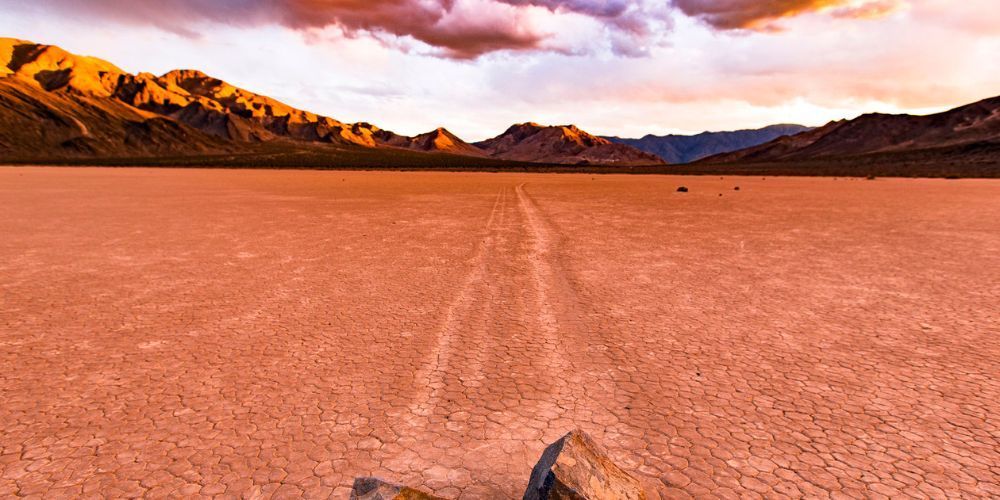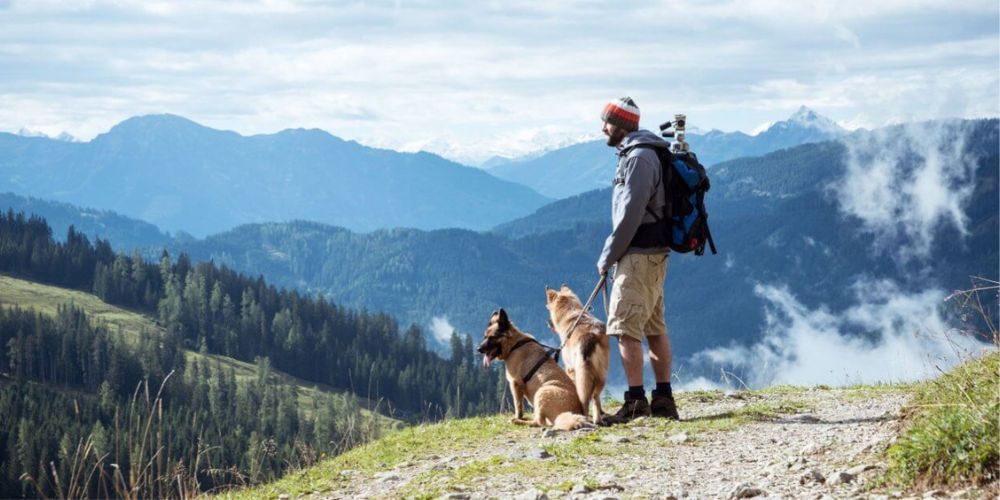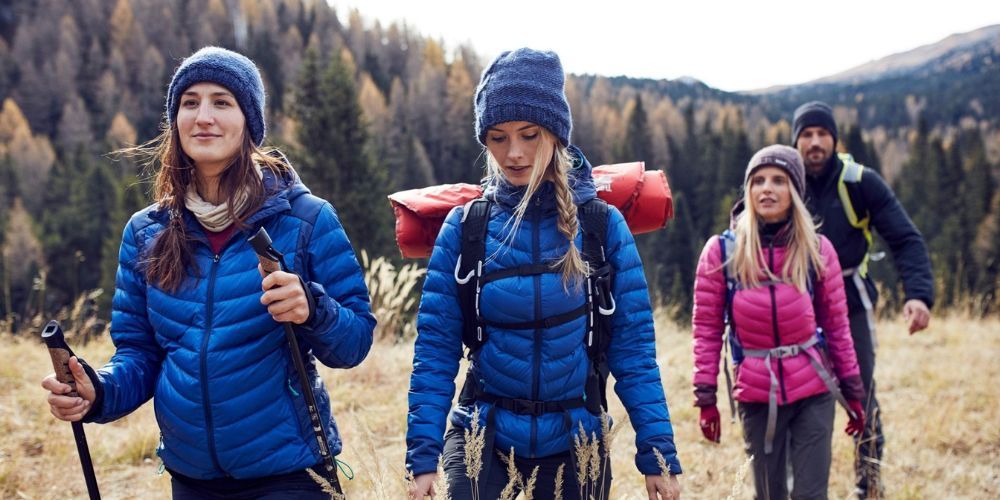The Best Waterproof Hiking Boots for Outdoor Adventures
Choosing the right waterproof hiking boot can truly transform your adventure. Looking at aspects such as overall structure, waterproofing techniques, durability, comfort, and grip will help you make an informed choice. Think about well-liked options like Salomon X Ultra 4 Mid, Danner Mountain 600, Topo Athletic Trailventure 2 WP, Merrell Moab 3 Mid, or Scarpa Rush 2 Mid GTX - they're loved by hikers for a reason. Importance also lies in understanding certain features in these boots.
Our comprehensive guide on waterproof hiking boots showcases a range of highly recommended options, including the Salomon X Ultra 4 Mid, Danner Mountain 600, Topo Athletic Trailventure 2 WP, Merrell Moab 3 Mid, and Scarpa Rush 2 Mid GTX. Each of these boots offers excellent waterproofing, comfort, traction, and breathability to ensure an enjoyable hiking experience while keeping your feet dry.
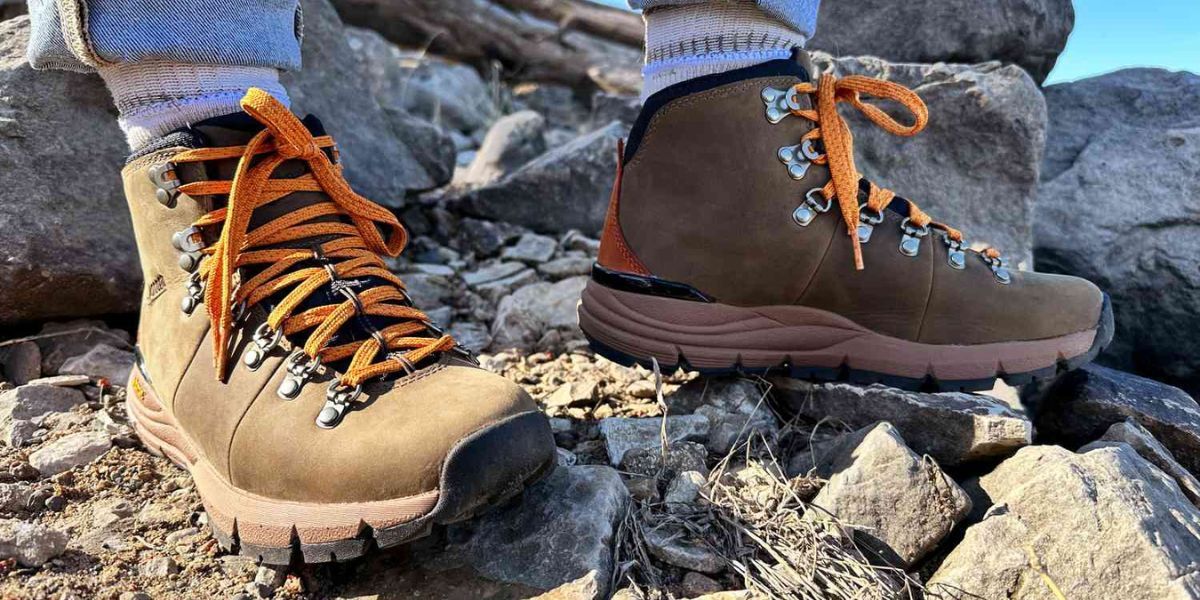
Best Waterproof Hiking Boots
Choosing the right pair of hiking boots can significantly impact your outdoor adventures. No one wants to end up with soaked feet miles away from shelter! Waterproof hiking boots play a crucial role in keeping your feet warm and dry, regardless of the weather conditions. When it comes to the best waterproof hiking boots, factors such as construction, waterproofing technology, durability, comfort, and traction are key considerations.
One popular choice that often rises to the top of many lists is the Salomon X Ultra 4 Mid GTX. These boots are renowned for their lightweight design, flexibility, and reasonable price. The GORE-TEX waterproofing technology ensures your feet stay dry in wet conditions. Additionally, they offer good comfort and low weight, making them an ideal choice for hikers looking for agility without compromising on support.
Another reliable option is the Merrell Moab 3 Mid WP. These boots are praised for their comfortable fit and great cushioning, making them an excellent choice for day hikes or casual outdoor activities. The trusty Vibram outsoles provide reliable traction on various terrains while the waterproofing technology keeps your feet dry in wet environments. However, these may lack the support needed for carrying heavy loads or navigating rough trails.
When it comes to rough terrain and backpacking adventures, the Salomon Quest 4 GTX is a standout choice. With its tough and protective construction, these boots are built to withstand the challenges of backcountry environments. The excellent lacing system allows for a customized fit while providing good cushioning and protection. However, they might be a bit on the heavier side for day hiking.
For hikers looking for maximum cushioning, the Hoka Anacapa 2 Mid GTX offers extreme comfort and a smooth ride. These boots are designed to provide exceptional cushioning and support throughout your hiking journey. However, some users have reported durability concerns with the outsole over long-term use.
Each of these options caters to different hiking preferences and terrains, so it's essential to consider factors such as weight, support, waterproofing technology, and overall comfort when choosing the best waterproof hiking boots for your outdoor excursions.
Armed with a better understanding of these top-rated waterproof hiking boots and their unique features, you're well-equipped to make an informed decision based on your specific needs and adventure plans.
Essential Features in Waterproof Hiking Boots
When it comes to choosing the best waterproof hiking boots , a few key features can make all the difference in your comfort, stability, and overall experience on the trail.
Waterproof Membrane
The first and most crucial feature to consider in waterproof hiking boots is the waterproof membrane. Look for boots equipped with membranes such as Gore-Tex or eVent, designed to keep water out while letting moisture from sweat escape. This effectively keeps your feet dry and comfortable throughout your hike.
These waterproof membranes act as your personal shield against nature's elements—tiny gatekeepers that ward off water without making you feel stuffy or sweaty inside your boots.
Quality Traction
The next vital feature is quality traction, which can make or break your hiking experience. Boots with high-quality outsoles, such as those made with Vibram technology, provide reliable grip on various terrains. Whether navigating muddy trails, rocky paths, or slippery surfaces, quality traction ensures stability and greatly reduces the risk of slips and falls.
Think of traction as your shoes' ability to grip onto the ground—it's like having little tire treads on your boots that help you stay steady no matter what terrain you encounter. Good traction gives you confidence to step securely on wet rocks, loose gravel, or uneven ground without worry.
So, when selecting waterproof hiking boots, focus on finding ones with exceptional traction capabilities to guarantee a safer and more enjoyable outdoor escapade.
As we navigate through the technological landscape of hiking gear, let's now turn our attention to exploring the role of synthetic materials in creating top-notch waterproof hiking boots.
Synthetic Materials in Waterproof Hiking Boots
When it comes to synthetic materials in hiking boots, nylon and polyester are the stars of the show. Waterproof hiking boots extensively employ these materials for their uppers. You might be wondering why exactly these materials are chosen over traditional leather. They have several advantages that make them a top choice for outdoor adventurers.
Lightweight and Quick-Drying
Lightweight is crucial in footwear, especially for hikers. When you're trekking over long distances, every ounce matters. Synthetic materials, such as nylon and polyester, are impressively light, reducing the strain on your feet and legs compared to heavier leather boots. Additionally, these materials dry quickly outdoors, making them a great option for hikers and backpackers who may encounter wet conditions or unpredictable weather.
Breathability and Comfort
Another standout feature of synthetic materials is their breathability. Hiking can be quite the workout, causing your feet to sweat. Nylon and polyester allow for effective air circulation around your feet, keeping them dry and preventing excessive heat buildup. This enhanced breathability leads to greater comfort during long hikes or extended periods of wear.
Durability and Support
While nylon and polyester may not seem as rugged as leather at first glance, advancements in synthetic material technology have led to impressive strength and durability. In fact, some synthetic blends offer excellent tear resistance and hold up well against abrasion from rough terrain. Additionally, when properly reinforced, these materials provide ample support for your feet and ankle stability.
Understanding how these synthetic materials contribute to the overall performance of waterproof hiking boots is vital when making an informed purchase decision. By recognizing the unique benefits they bring to the table—lightweight design, quick-drying properties, breathability, durability, and support—you can equip yourself with footwear tailored specifically to meet the demands of outdoor adventures.
By acknowledging the strengths of synthetic materials in waterproof hiking boots, you can better appreciate their suitability for a range of outdoor activities—from casual day hikes to challenging multi-day treks across rugged landscapes.
Effectiveness of Waterproof Membranes
When it comes to outdoor adventures, dry feet are crucial for a comfortable trek. The effectiveness of modern waterproof membranes, like Gore-Tex and eVent, cannot be overstated. These membranes act as a shield for your feet, protecting them from rain, snow, and standing water, while still allowing excess moisture to escape—you create your own personal microclimate inside your boots.
Gore-Tex and eVent stand as two of the most popular waterproof membranes used in hiking boots. Engineered to keep external moisture out while letting internal moisture escape, they are ideal for long hikes in various conditions - whether it's a drizzly day or a hot summer trek.
Gore-Tex vs eVent
These two membranes do the same job but have different structures. Gore-Tex has pores that are 20,000 times smaller than a water droplet, making it effectively waterproof from the outside. On the other hand, eVent has a unique membrane structure that is air permeable and instantly vents any built-up heat and moisture. Both perform admirably in their respective capacities, ensuring your comfort in wet conditions.
Imagine you're on a hike—a brief shower passes through as you navigate a muddy trail. Your boots feel impervious to the rain outside while inside, your feet stay pleasantly dry and comfortable, thanks to the remarkable performance of these waterproof membranes.
This level of protection enables hikers to confidently traverse puddles, streams, and wet snow without worrying about water seeping into their footwear and causing discomfort or blisters from prolonged exposure to moisture.
For those looking to invest in reliable waterproof hiking boots , taking note of the type of membrane being used is crucial. Ensure that whichever boot you select has either Gore-Tex or eVent technology for exceptional waterproofing and breathability.
With this understanding of how modern waterproof membranes operate effectively to shield your feet from external moisture while maintaining internal comfort, let's now explore the important factors involved in choosing the best waterproof hiking boots for outdoor excursions.
Role of Midsole and Outsole in Hiking Boots
When considering hiking boots, it's easy to get caught up on the exterior—how strong, durable, or waterproof they are. But it's what's inside and underneath that truly matters for a comfortable and secure trek. The midsole and outsole of your hiking boots play significant roles in ensuring your feet remain protected, comfortable, and steady during long hikes on varied terrain.
Midsole Support
The midsole is the layer between the insole (where your foot rests) and the outsole (the bottom part of the boot). It's a quiet yet essential part of what makes a hiking boot supportive and comfortable. A good midsole provides cushioning against rocks and roots while absorbing shock from rocky trails.
The midsoles, usually made of materials like EVA (ethylene-vinyl acetate) or polyurethane, range from softer cushioning to firmer support. They can shape how your foot moves while walking, absorbing most of the impact before it reaches your foot. These materials retain their shape over time, providing consistent support.
Finding the Right Midsole
The ideal midsole balances cushioning with firmness, offering both comfort and stability. Softer EVA midsoles are great for casual hikers on smoother trails, while firmer options provide better stability on unpredictable terrain. When shopping for hiking boots, always consider the type of terrain you'll be covering to ensure you get the right level of support and cushioning.
A supportive and well-cushioned midsole can greatly reduce fatigue and strain on your feet during lengthy hikes, making it a critical factor in choosing the right pair of boots.
Importance of a Durable Outsole
Now let's talk about the outsole—the part that touches the ground. The outsole needs to secure your stability by maintaining proper traction on various surfaces. After all, you wouldn't want to slip on wet rocks or muddy trails during your adventure.
Top-quality hiking boots often feature Vibram outsoles, known for their superior grip and durability across a wide spectrum of terrains. The unique rubber compound used to craft these outsoles offers exceptional traction and resilience against rugged trails and harsh conditions.
Traction for Challenging Terrains
The lug pattern on the outsole plays a crucial role in delivering remarkable traction—it refers to the deep indentations or bumps on the bottom of the boot that allow it to grip surfaces securely. Different lug patterns are designed for specific terrains—shallow lugs for flat terrains, denser lugs for rough trails or steep slopes.
Striking a balance between a supportive midsole made with quality materials like EVA or polyurethane, coupled with a dependable outsole equipped with an optimal lug pattern from reputable brands like Vibram, is vital in ensuring a comfortable, safe, and enjoyable hiking experience.
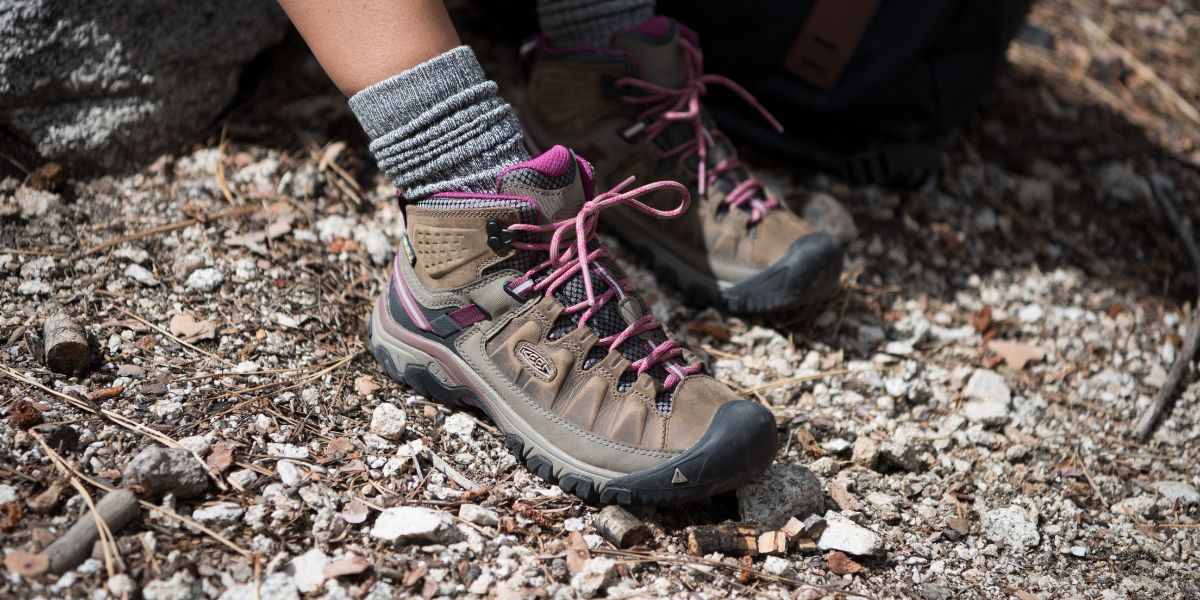
Importance of Weather Protection in Hiking
Weather can be unpredictable when you're out on the trails, and getting caught in rain or snow can make for quite an uncomfortable hike. However, having the right pair of waterproof hiking boots can make all the difference. *Keeping moisture out while allowing sweat to escape ensures that your feet remain dry—essential for comfort and for protecting your feet from blisters and discomfort during long hikes*.
Imagine this - you're trekking through forests, climbing rocky paths, and crossing streams. Your non-waterproof boots soak up the moisture like a sponge, leaving your socks wet, your feet clammy, and if it continues for too long, your skin becomes waterlogged. On the other hand, with waterproof boots, your feet remain dry and comfortable throughout, reducing the risk of discomfort, blisters, and even trench foot—a serious condition caused by prolonged exposure to dampness.
It's not just about keeping moisture out—breathability is another crucial aspect. Waterproof boots must allow sweat to escape so that your feet remain dry from the inside as well. Without proper breathability, your feet may end up sweating excessively inside the boots, leading to a whole host of problems such as athlete's foot and increased discomfort during long hikes.
The Science of Waterproofing
Let's simplify the science behind waterproofing using an everyday example. Think of waterproof hiking boots as a well-made raincoat. Just as a good raincoat keeps rain out while letting air circulate to prevent you from getting sweaty, waterproof hiking boots do the same for your feet.
Staying Dry and Comfortable
Staying dry isn't just about staying comfortable; in colder conditions, it's also about staying warm. Wet feet can lead to rapid heat loss from the body, which increases the risk of cold-related injuries. Properly insulated waterproof hiking boots can help maintain warmth by keeping your feet dry even in adverse weather conditions.
So, whether you're facing unexpected showers or wading through shallow streams during your hike, investing in top-quality waterproof hiking boots is essential for ensuring that your outdoor adventures are as comfortable and enjoyable as possible.
As we continue our exploration into the world of hiking essentials, let's now shift our focus to the vital link between comfort and dryness during long hikes.
Relation of Comfort and Dryness to Long Hikes
When it comes to hiking, your feet can either be your best friends or your worst enemies. Picture embarking on a long hike through a beautiful trail, only to be interrupted by painful blisters and sore spots. It's not just discomfort; it's your body signaling that something isn't right. Wet or uncomfortable feet decrease your endurance, causing distractions and discomfort that take away from the joy of the journey.
The thing is, when your feet are uncomfortable, you start thinking about them instead of just enjoying the hike. Your mind drifts from the breathtaking views and wildlife around you—instead, it's occupied with discomfort and pain.
Now let's break down how the condition of your feet affects your hiking experience:
The Bane of Wet Feet
Wet, soggy socks can lead to blisters and discomfort. They become soft and easily rub against your skin, causing chafing and hot spots—which eventually lead to painful blisters that become a nuisance during the hike.
The Impact on Endurance
When your feet are wet or uncomfortable, they can't perform at their best. Discomfort can distract you from focusing on the trail and may even cut short an otherwise enjoyable hike.
For instance, imagine having to stop frequently to adjust your damp socks and feel the discomfort caused by waterlogged hiking boots. This constant attention to discomfort steals your focus from experiencing the beauty around you.
So, what's the solution? Properly waterproofed hiking boots and moisture-wicking socks are essential for keeping your feet dry and comfortable. They prevent water from seeping in while allowing sweat to evaporate, ensuring dryness and comfort throughout your adventure.
It's clear that keeping your feet dry and comfortable has a direct impact on your endurance during long hikes. By investing in quality footwear and appropriate gear, you can ensure that nothing comes between you and an unforgettable outdoor experience.
Understanding how important it is to prioritize comfort and dryness for an enjoyable outdoor adventure lays the groundwork for making an informed choice when selecting the ideal hiking boots tailored to your needs.
Guide to Picking Your Ideal Hiking Boots
Choosing the ideal hiking boots is like finding a loyal companion for your outdoor escapades. There’s no one-size-fits-all in this realm; your perfect pair is as unique as you are. So, let's start with the first step – determining the type of terrain where you'll be exploring most frequently.
Consider Your Typical Hiking Terrain
When considering the terrain, think about whether you’ll be traipsing through rocky trails, muddy paths, or scaling steep ascents. Each type of terrain demands different features in a hiking boot. For instance, if you're often hiking on rugged mountain trails, sturdy ankle support and aggressive tread for traction would be beneficial. Conversely, if you typically explore more level paths, lightweight and breathable boots might be more suitable.
It's akin to choosing shoes for different occasions; just as you wouldn't wear heels while hiking up a mountain, picking the right hiking boots ensures that your feet are comfortable and well-equipped for the challenges ahead.
Try Them On
Once you have an idea of what kind of boots you need based on your typical terrain considerations, it's time to hit the stores. Trying on different boots is crucial because what looks good on paper may not feel fantastic on your feet. When you try them on:
- Pay attention to how they feel—keep an eye out for any spots that might rub against your feet.
- Check for necessary support for your feet—like a snug fit around the heel and ample space for your toes to wiggle.
Remember, comfort is key here; if a boot feels uncomfortable when trying it on in the store, it's likely to cause discomfort during those long hikes.
Read Reviews
As modern-day adventurers often do, seek insight from experienced hikers and outdoor enthusiasts. Look for reviews and recommendations to gain real-world perspectives on different hiking boots. Reading about performance in various terrains and weather conditions can provide valuable cues about which boots may meet your needs best.
Keep in mind: A good fit can mean the difference between a blister-free hike and painful discomfort.
With these steps in mind—considering your typical terrain, trying them on in person, and researching through trusted reviews—you'll be well on your way to finding your perfect pair of hiking boots that will accompany you through countless adventures.
Finding the right pair of hiking boots isn't just about practicality—it's about ensuring that each step of your outdoor journey is supported and comfortable. With the right pair on your feet, you're poised for countless adventures to come.
Nature's Playbook
As an Amazon Associate I earn from qualifying purchases.





